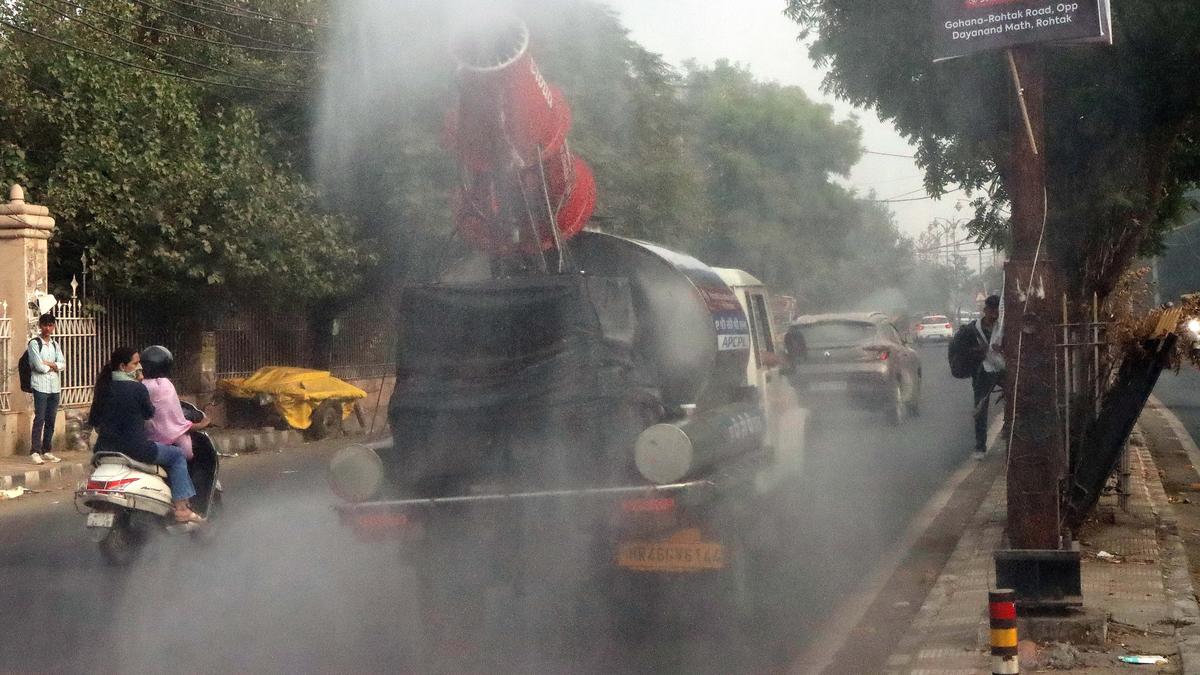 |
|
The alarming state of air quality in Haryana and Punjab is a pressing environmental concern, highlighted by the severe AQI readings reported on November 16th, 2024. Jind, Haryana, recorded a particularly concerning AQI of 410, firmly placing it in the 'severe' category. This signifies a significant health risk to residents, potentially leading to respiratory illnesses and other health complications. The widespread nature of the poor air quality extends beyond Jind, impacting numerous other regions within Haryana and Punjab. Cities such as Bhiwani (392), Bahadurgarh (383), and Panipat (357) in Haryana also experienced 'very poor' to 'severe' air quality, indicating a regional air pollution crisis.
The impact of this air pollution extends beyond the immediate geographical area. The proximity of these severely affected regions to Delhi raises concerns about the contribution of this pollution to the already problematic air quality in the national capital. The correlation between stubble burning in Punjab and Haryana and Delhi's air pollution levels is well-documented. The practice, while unfortunately often necessary for farmers due to the short window for planting Rabi crops, releases massive amounts of pollutants into the atmosphere, exacerbating existing air quality issues. The reported 238 farm fire incidents in Punjab on Friday alone, adding to a total of 7,864, underscore the scale of this problem and its direct impact on air quality across the region.
Addressing this issue requires a multi-pronged approach involving both short-term and long-term solutions. In the short term, stricter enforcement of regulations against stubble burning and the promotion of alternative methods of crop residue management are crucial. This could involve providing farmers with financial incentives to adopt techniques that minimize burning, such as in-situ management or the use of specialized machinery. Furthermore, raising public awareness about the health risks associated with air pollution and encouraging individuals to take protective measures, such as limiting outdoor activities during periods of high pollution, is essential. These short-term solutions, however, are only part of the answer.
The long-term solution necessitates a shift towards sustainable agricultural practices. Investing in research and development of more efficient and environmentally friendly farming methods can reduce reliance on practices like stubble burning. This includes exploring and promoting alternative technologies for crop residue management that are both economically viable and environmentally sustainable. Furthermore, collaborative efforts between governments, research institutions, and farmers are crucial for developing and implementing these long-term solutions. This could involve providing farmers with access to appropriate technology and training, as well as ensuring financial support to ease the transition to sustainable practices. This regional problem requires a holistic strategy encompassing both immediate action and long-term planning to achieve meaningful and lasting improvements in air quality.
The alarming AQI readings serve as a stark reminder of the urgent need for comprehensive action to tackle air pollution in the region. The human health consequences are significant, and the economic implications of reduced productivity and healthcare costs are considerable. The issue extends beyond regional borders, affecting the air quality of major cities like Delhi, highlighting the interconnectedness of environmental challenges and the need for collaborative solutions. Ignoring this crisis will only lead to further health problems and environmental degradation. A concerted, multi-faceted response is the only way to ensure a healthier and cleaner future for the people of Punjab, Haryana, and beyond.
Source: Haryana's Jind records AQI at 410; other parts in 'very poor' zone
